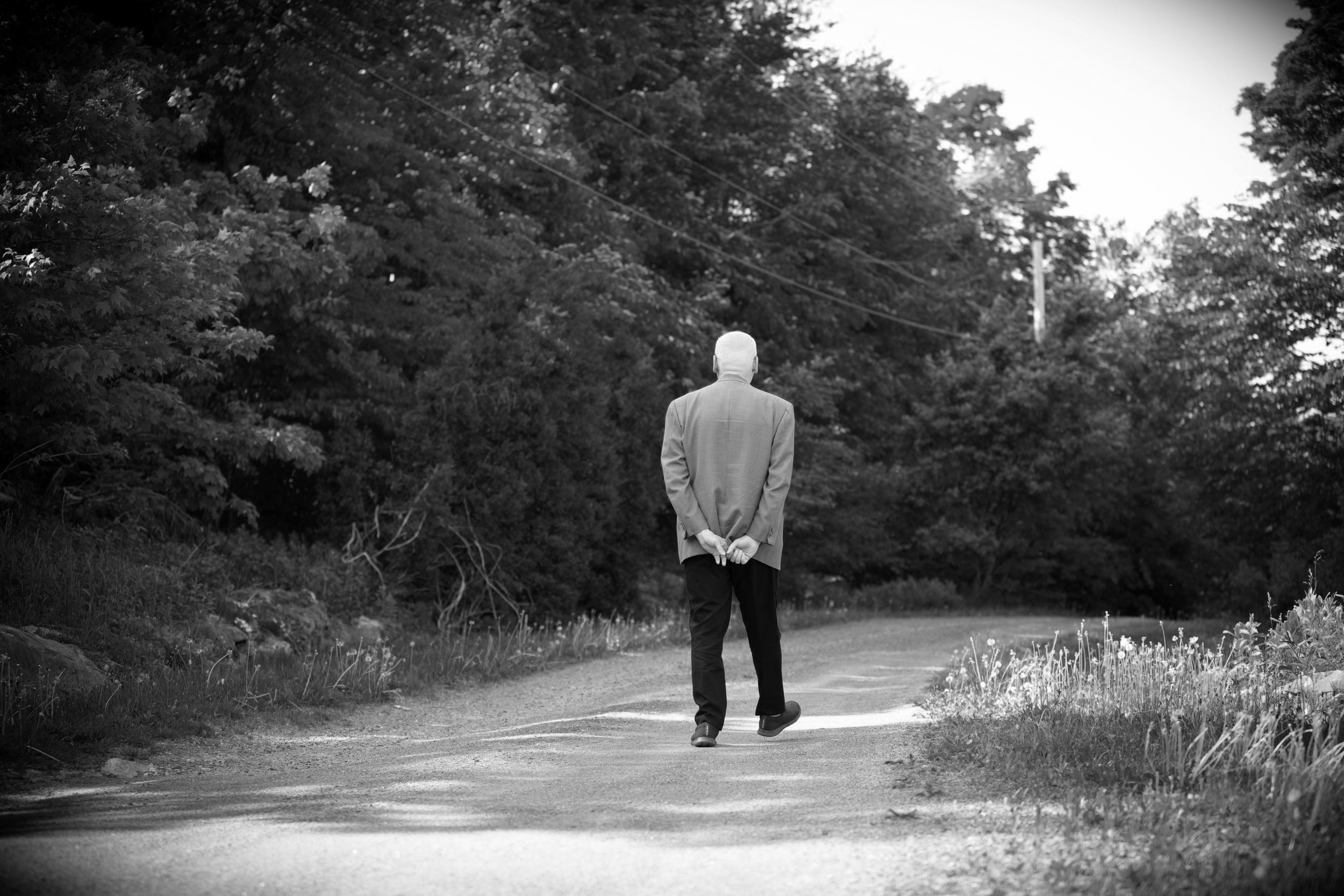
Welcome to my Blog
Thank you for stopping by. This space is where I share research, reflections, and practical tools drawn from psychology and couples therapy.
Are you a couple looking for clarity? A professional curious about the science of relationships? Or simply someone interested in how love and resilience work? I’m glad you’ve found your way here.
Each post is written with one goal in mind: to help you better understand yourself, your partner, and the hidden dynamics that shape connection.
Grab a coffee (or a notebook), explore what speaks to you, and take what’s useful back into your life and relationships. And if a post sparks a question, or makes you realize you could use more support, I’d love to hear from you.
Be Well, Stay Kind, and Godspeed.
~Daniel
P.S.
Feel free to explore the categories below to find past blog posts on the topics that matter most to you. If you’re curious about attachment, navigating conflict, or strengthening intimacy, these archives are a great way to dive deeper into the research and insights that I’ve been sharing for years.
- Attachment Issues
- Coronavirus
- Couples Therapy
- Extramarital Affairs
- Family Life and Parenting
- How to Fight Fair
- Inlaws and Extended Families
- Intercultural Relationships
- Marriage and Mental Health
- Married Life & Intimate Relationships
- Neurodiverse Couples
- Separation & Divorce
- Signs of Trouble
- Social Media and Relationships
- What Happy Couples Know
The Uncanny Cradle: Inside the World of Reborn Toddler Dolls
By now, you’ve probably seen one: a hyper-realistic toddler doll, complete with glassy eyes, mohair lashes, weighted limbs, and a name like Paisley or Jaxon.
If you’re lucky, they’re just sitting quietly in a pink stroller. If you’re unlucky, they’re buckled into the Target cart ahead of you while their owner argues with a cashier about expired coupons—pausing only to coo “It’s okay, baby girl” to five pounds of vinyl.
Welcome to the world of reborn toddler dolls, a niche hobby that refuses to stay niche.
Reborns started as hyper-realistic infant dolls in the 1990s, but they’ve grown—literally. Now we have toddlers.
And not just any toddlers: sleepy, chubby-cheeked silicone children that look like they should be in preschool but are instead being bottle-fed in YouTube “roleplay” videos for millions of views.
So… what’s going on?
Doubling-Back Aversion: Why We Avoid the Smarter Path (Even When We Know It’s Better)
Ever walked ten minutes in the wrong direction and refused to turn around—just because “you already started this way”? Welcome to the human condition.
Or, more precisely, to a newly documented psychological bias called doubling-back aversion.
According to new research published in Psychological Science (Cho & Critcher, 2025), people tend to reject more efficient options if those options involve undoing progress—even when it’s obvious that retracing their steps would save time and energy.
It’s not about being bad at math. It’s about the uncomfortable feeling of wasted effort.
Why You're More Likely to Find Love When You're Not Desperate for It
If you're single and exhausted, you've probably already received more advice than a NASA launch team. “Put yourself out there.” “You’ve got to love yourself first.” “Don’t be so picky.”
Most of it’s well-meaning, some of it’s cruel, and none of it answers the real question:
Why do some people find love… while others seem to repel it like mismatched refrigerator magnets?
Now, thanks to a new study in Personality and Social Psychology Bulletin, we have a better answer.
It’s not about how attractive, extroverted, or even ready you are.
It’s about why you’re looking in the first place.
Because, as it turns out, the universe has a sense of humor.
The Rise of the Oodles: Curated Family-Member Crossbreeds
Once upon a time, a dog was a dog.
You picked a retriever, a shepherd, or the mutt your cousin was rehoming. These dogs barked, chased tennis balls, and shed like shame.
But then came the Oodles—hybrids with names that sound like pasta dishes or sneeze noises. The Bolonoodle. The Chipoo. The Twoodle.
You’d be forgiven for wondering if these names came from a Dr. Seuss cookbook.
But beneath the whimsy lies something more profound: a seismic shift in how modern families define kinship.
Oodles are not just dogs. They are curated, intentional additions to the social fabric of the household.
Does My Nervous System Like You?
Let’s be honest. If your nervous system had a Tinder profile, it would probably swipe left on half your exes and one-third of your “situationships.”
But nobody ever taught us to check in with our vagus nerve. We were trained to ask:
“Do we have chemistry?”
“Do they make me laugh?”
“Do they believe in therapy?”
No one said:
“Does my diaphragm sigh when they enter the room, or does my jaw tighten like I’m preparing for a tax audit?”
Welcome to the age of nervous system compatibility—the dating filter we didn’t know we needed.
Cozy Nihilism: Everything Is Meaningless, But I Made Soup
“Nothing matters. I swept the floor. I’m learning French. The basil’s doing okay.”
Welcome to the quiet revolution of Cozy Nihilism, a worldview stitched together from existential dread and decent lighting.
You’ve probably seen it—or lived it. A loaf of sourdough and a Camus quote.
A candle lit in protest of absolutely everything. A friend texting, “The planet’s dying. I’m reorganizing my spice rack.”
It’s not apathy. It’s not exactly hope either. It’s the emotional middle ground between burnout and total collapse.
And surprisingly? It’s working.
Grief Collab: When Shared Loss Looks Like Love
“We met at my father’s funeral. By the end of the month, we were cohabitating and jointly adopting a houseplant. I'm still not sure if it was a relationship or a rescue mission.”
Grief has a way of collapsing time. One minute you're organizing casseroles and trying to find a black sweater that doesn't make you look like death warmed over.
The next, you're curled up on someone’s couch—someone you barely knew two weeks ago—sharing intimate details about the person you just lost and wondering if you’ve stumbled into something romantic, or just emotionally convenient.
That, dear reader, is what the internet has started calling a Grief Collab.
It’s when two people meet in the raw heat of loss and mistake shared mourning for compatibility. Sometimes it becomes something real. Often it doesn’t. But always, it deserves a closer look.
Some New Thoughts on Emotional Fluency in Men
There’s a man somewhere right now in couples therapy, trying to explain to his partner that he isn’t “emotionally unavailable”—he just never learned the language. He doesn’t lack feelings. He lacks a grammar.
The irony is he’s not alone.
In 2025, something is shifting. The old cultural story—“men don’t feel”—is finally giving way to a richer, more dangerous truth: men do feel.
Deeply. Frequently. Often with confusion. Occasionally with terror.
The question isn’t if men feel. It’s whether they’re allowed to say what they feel without being shamed into silence or theatricality.
This is not about softening men into sainthood or turning every dude into a walking TED Talk on childhood trauma.
It’s about building emotional fluency: the capacity to notice, name, and navigate internal states—and communicate them with enough clarity that someone else doesn’t have to decode the aftermath.
The Nervous System as a Moral Compass
There is a quiet revolution happening in the world of psychology, and it begins not in our thoughts or values but in the vagus nerve.
Where we once asked, “Why did he do that?” we now ask, “What state was his nervous system in?”
This is not to absolve wrongdoing. This is not some soft-focus relativism.
This is a shift—one that moves moral reasoning away from the cold marble bust of Kant and toward the pulsing tissues of mammalian co-regulation.
Because before we can make an ethical decision, we must feel safe enough to consider one.
In the words of poet Jericho Brown:
“Compassion is something we practice in our breathing.”
It turns out the breath, quite literally, makes us human.
What We Keep: Untangling Physical and Emotional Hoarding in Kentucky Homes—and Hearts
From Owensboro barns packed with unridden bicycles to cloud drives overflowing with decades of “someday” emails, Kentuckians are skilled at holding on—both to things and to feelings.
On good days, that instinct is an art form: it protects heirloom quilts, handwritten recipes, and the emotional echoes of tent revivals and front-porch stories.
But on harder days, it slips into something heavier: hoarding.
Not just of physical objects, but of grief, regret, unfinished conversations, and the past itself.
The American Psychiatric Association now defines hoarding disorder as more than just clutter.
It becomes a clinical issue when the thought of letting go—of anything—triggers distress, panic, or even despair (American Psychiatric Association, 2023).
Whether it’s stacks of yellowing newspapers or unspoken resentments filed away in the mind, the struggle is real.
And often, emotional hoarding hides beneath the surface long before a family realizes what they’re up against.
Running the Eye of the Needle: A Group Therapy Ritual for Emotional Hoarders
If you’ve ever sat in a circle of adults who’ve lost a spouse, packed up their childhood home, survived their parents, or outlived their regrets—you know what emotional hoarding looks like.
It’s not about being broken. It’s about being full. Too full.
And like a suitcase with a busted zipper, it just doesn’t close right anymore.
That’s where the Eye of the Needle Ritual comes in.
Inspired by that famous Gospel mic-drop—"It’s easier for a camel to pass through the eye of a needle than for a rich man to enter the kingdom of God"—this group exercise invites people to imagine themselves as spiritual millionaires.
Not in gold or crypto, but in emotional inheritance.
Some of it earned, much of it imposed, and nearly all of it overdue for sorting.
Here’s how to run it like a pro therapist—or at least like a well-meaning soul with a clipboard and a knack for asking hard questions gently.
The Personality of the Perpetually Single: What the Big Five Reveal About Lifelong Solo Acts
By 2023, half of America was flying solo. And not just metaphorically.
According to the U.S. Census Bureau, 46.4% of American adults were single.
A record-breaking number—32% of women and 37% of men—had never married. That’s not just a blip. It’s a demographic moonwalk away from the altar.
So who are these long-term solo dwellers?
Are they independent spirits with excellent taste in throw pillows? Or is there something—psychologically speaking—that separates the coupled from the contentedly (or not-so-contentedly) uncoupled?
Turns out, personality may be part of the story.











